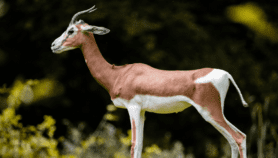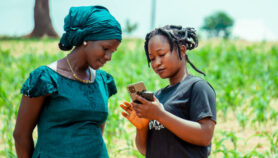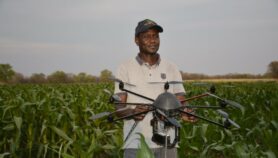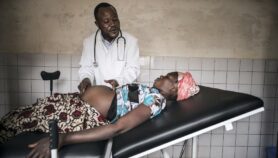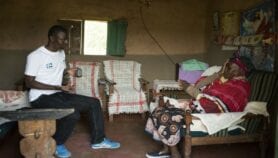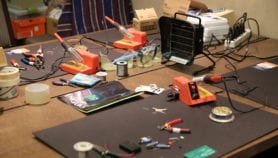11/03/21
Tracking tool makes light work of banana breeding
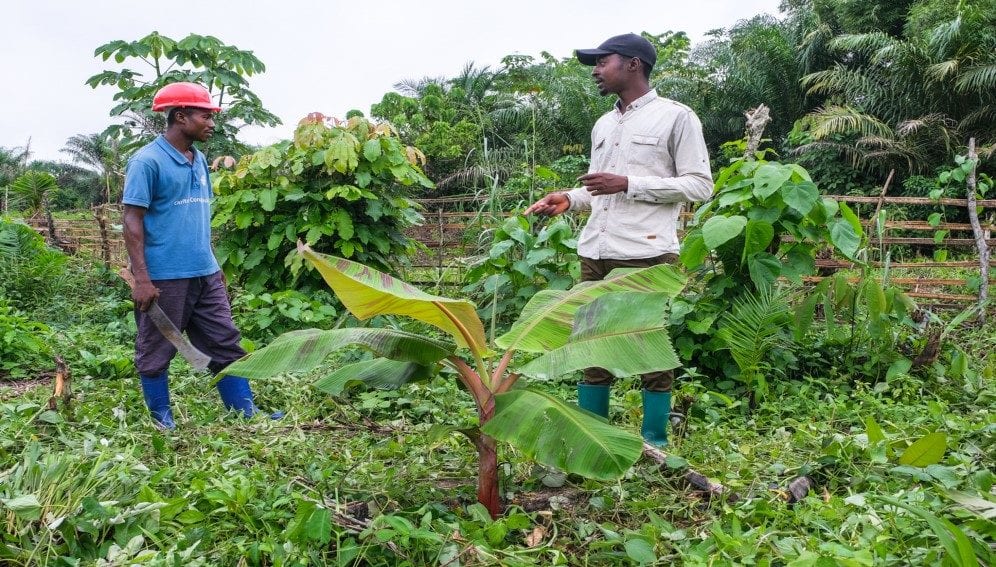
By: Onyango Nyamol
Send to a friend
The details you provide on this page will not be used to send unsolicited email, and will not be sold to a 3rd party. See privacy policy.
[NAIROBI] A digital tool that uses barcodes to routinely track the banana breeding process is helping scientists identify suitable varieties, with the hope of improving cultivation programmes.
The banana breeding tracking tool, BTracT, was developed as part of a project led by the International Institute of Tropical Agriculture (IITA), according to a statement issued by the IITA last month.
A specific barcode identity, according to the scientists, is fixed on each plant in each location, and the BTracT records features such as pest resistance, plant stature, colour and feel of cooked bananas. The details are then stored in a global banana breeding database called MusaBase to be accessed by scientists.
“The success of these tools depends on how easily accessible they are to breeders in different countries.”
Paul Kimani, University of Nairobi
Scientists say that prior to the development of BTracT, it was challenging to organise and keep track of data on banana varieties being bred over several years.
“When I arrived [here] six years ago, all of the operations were written down and then transferred to three different Excel [spread] sheets: for pollinations, for seeds harvested … and seeds that were being weened for the field and planted in the field,” says Allan Brown, IITA banana breeder based in Arusha, Tanzania. “There were mistakes made on all of these sheets and they rarely matched up with each [other].”
Many researchers, he adds, struggle with these same issues, so any innovation that increases the efficiency of the breeding programme or reduces the time required to develop new varieties will benefit smallholders.
Trushar Shah, IITA’s Integrated Breeding Platform hub manager, tells SciDev.Net that the tool can be used to collect field and laboratory data through Android handheld tablets or phones, with a dashboard aggregating the data from different users and locations. The dashboard also provides real-time analytics and reporting at all levels of the breeding programme.
“The [tool’s] initial development took over a year with deployment and adoption in Arusha followed by other breeding locations,” Shah says. The development started late 2017 and it is now fully operational within the IITA banana breeding programmes in Uganda and Tanzania.
According to the IITA statement, banana is a source of food and income for millions of smallholders in low- and middle-income countries but yields remain low. Uganda’s average annual banana yield, for example, is ten tonnes per hectare, despite having the potential to produce 60 tonnes per hectare a year. The low yields are attributed to factors such as use of low yielding verities, poor soil quality and pests and diseases.
Paul Kimani, a professor of plant breeding and genetics from Kenya’s University of Nairobi, says that BTracT is a useful innovation, for helping banana breeders keep track of progress.
“It takes about 20 years to develop a banana variety. Keeping records this long is a challenge. You need a very well-organised programme and highly reliable and qualified technicians,” Kimani adds.
But Kimani cautions that the tool may not be a silver bullet for banana breeding, adding that its true value will become clearer as more breeders in different parts of Africa and the world use it.
“The success of these tools depends on how easily accessible they are to breeders in different countries, ease of use and availability of training for potential users,” he explains. “In general, modern breeders use a wide array of tools, each making a different contribution. No one tool can transform banana breeding.”
This piece was produced by SciDev.Net’s Sub-Saharan Africa English desk.


